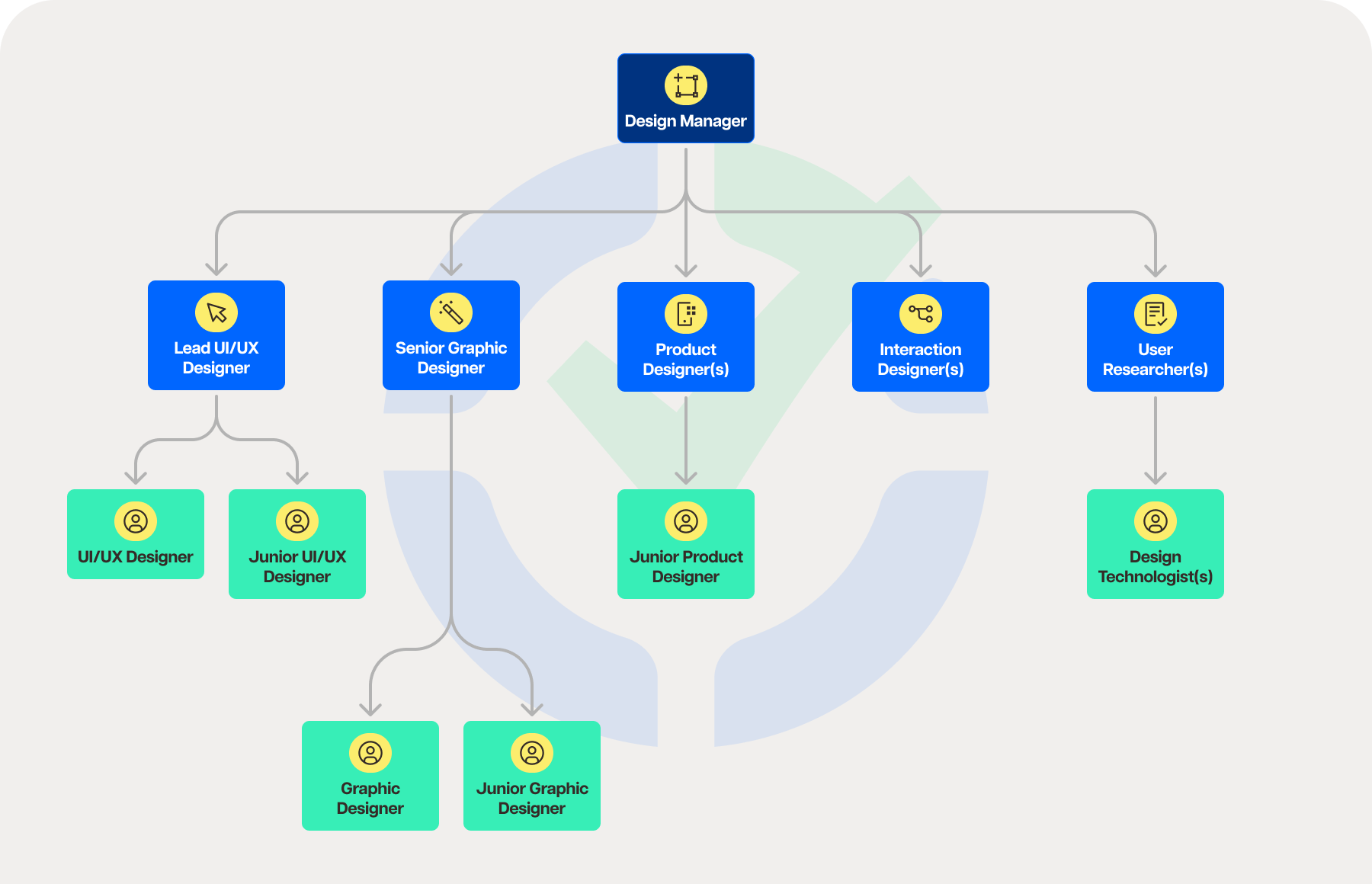One of the most important factors that will decide your success in the always-changing field of design is having an effective team structure. The structure of your design team can have a big impact on how creatively and productively you produce solutions, whether you are creating digital experiences, designing products, or creating brand identities.
Regardless matter the kind of design you are working on, this is true. This post will explore the importance of having a well-structured design team, look into the guiding principles of team structures, discuss various types of structures, highlight key roles within the team, look into tools that promote collaboration, strategies for integrating with other departments, scale considerations, and end with some tips on how to build and run an effective design team.
Table of Contents
- Core principles of design team structure
- Types of design team structures
- Sample design team structure
- Collaboration and communication tools
- Integrating the design team with other departments
- Scaling the design team
Core principles of design team structure
- Flexibility: It is important for the framework of a design team to be able to adapt to changing market trends, organizational changes, and project needs. Flexibility allows teams to quickly adapt to new opportunities and issues, which in turn makes sure that teams stay relevant and imaginative.
- Collaboration: It’s important for design projects to have collaboration that works well and quickly. To build a culture of openness and mutual respect among team members, the team should be set up in a way that makes it easy for people to talk to each other, share ideas, and work together across different fields.
- Specialization: Collaboration is vital, but it’s also critical to specialize. People who work on design teams are often highly skilled in a variety of areas. User research, graphic design, product design, and user interface and user experience design are a few examples. These abilities should be employed in a well-thought-out plan to maximize their combined effects.
- Leadership and direction: Design teams must be able to perform within a framework provided by clear leadership and direction. Establishing strategic goals, providing direction, and aligning design efforts with broader organizational goals are all important responsibilities that fall under the purview of design managers.

Types of design team structures
- Centralized vs. decentralized: Centralized structures facilitate consistency and alignment by consolidating decision-making authority under a specific leadership team. Decentralized systems, on the other hand, encourage autonomy and creativity by dividing up decision-making among different groups or individuals.
- Integrated vs. independent: While independent structures enable each design discipline to function independently and concentrate on specific tasks, integrated structures place an emphasis on tight collaboration and seamless integration across several design disciplines.
- Functional vs. cross-functional: Functional structures organize team members based on their specific skill sets or functions (e.g., UI/UX designers, graphic designers), while cross-functional structures bring together individuals from different disciplines to work collaboratively on multidisciplinary projects.
Sample design team structure
A hybrid, cross-functional team structure may include roles such as:
- Design Manager: Provides overarching leadership and direction.
- Lead UI/UX Designer: Focuses on user experience and interface design.
- Senior Graphic Designer: Leads branding and visual identity efforts.
- Product Designer(s): Design and iterate on product features.
- Interaction Designer(s): Enhance user engagement through interactive elements.
- User Researcher(s): Conduct research to inform design decisions.
- Design Technologist(s): Bridge design and development through technology implementation.

Collaboration and communication tools
There is a lot of software and tools out there that can help design teams work together better. Some examples are project management platforms, design modeling tools, and communication channels like Slack or Microsoft Teams. Clear channels of contact are especially important for teams that work in different places or are spread out.
Integrating the design team with other departments
Setting up strong communication channels, helping each other understand goals and processes, and using shared resources and knowledge are all important parts of working together across departments. Joint ideation sessions, regular cross-functional meetings, and integrated project management tools are all examples of integration that work well.

Scaling the design team
As organizational needs evolve, scaling the design team becomes necessary. Key considerations include assessing workload demands, identifying talent gaps, and implementing scalable processes and workflows. Maintaining efficiency during scaling involves careful planning, resource allocation, and ongoing evaluation of team dynamics.
Conclusion
In order to construct and manage an effective design team structure, it is necessary to give careful consideration to fundamental concepts, different types of structures, important responsibilities, collaboration tools, integration techniques, and scaling considerations.
If companies put flexibility, teamwork, specialization, and strong leadership at the top of their list of priorities, they can create a design culture that leads to new ideas, encourages creativity, and provides great user experiences.
Companies can set up their design teams to succeed in a digital world that is always changing by following these guidelines and using good strategies.

Andy is a technology & marketing leader who has delivered award-winning and world-first experiences.


